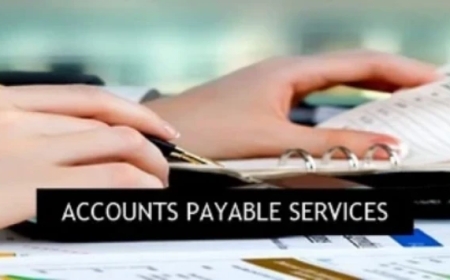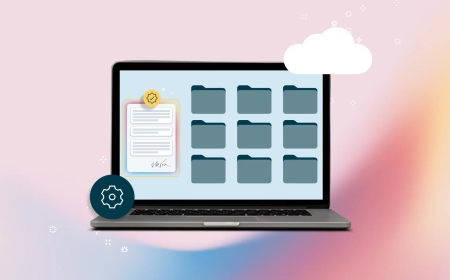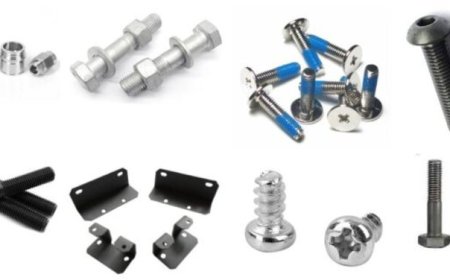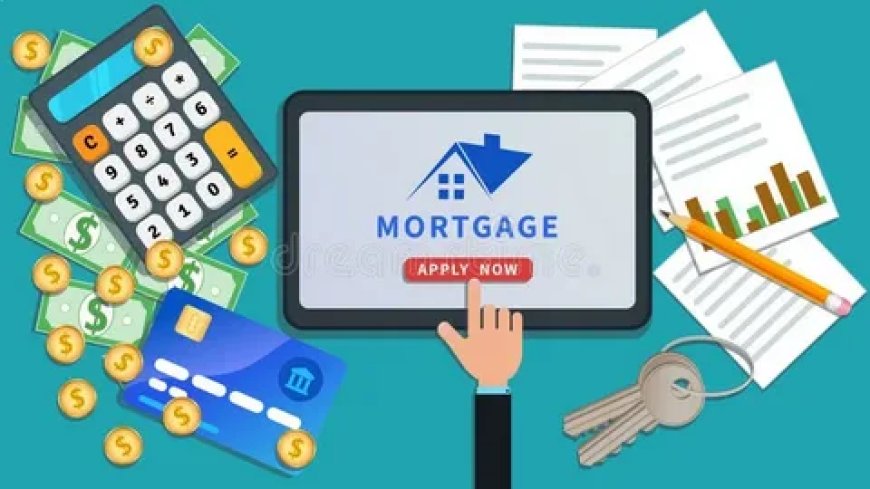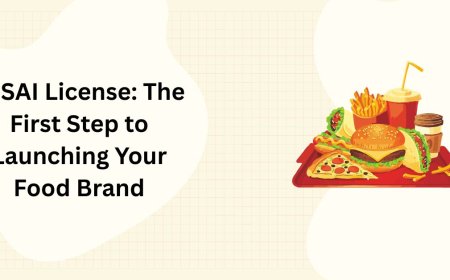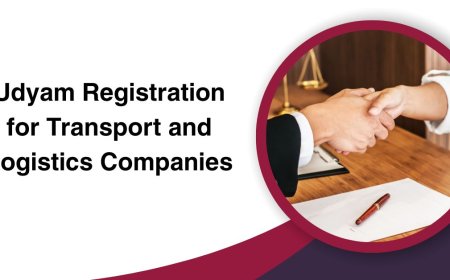Mortgage Payment Software in 2025: How Automation is Transforming Loan Repayment, Escrow Handling, and Borrower Engagement
Discover how mortgage payment software automates loan servicing, ensures compliance, and improves borrower experience in the digital mortgage era.
As the mortgage industry undergoes rapid digital transformation, one area seeing tremendous innovation is loan servicingand at the core of that transformation is mortgage payment software. In an age where digital banking and mobile payments are the norm, lenders and servicers can no longer afford to manage repayments with outdated systems or manual processes.
This comprehensive 2025 guide explores how mortgage payment software is streamlining operations, ensuring regulatory compliance, improving borrower experience, and driving cost-efficiency. Whether youre a mortgage lender, credit union, servicer, or fintech startup, understanding the value of this technology is essential to remaining competitive and compliant.
What Is Mortgage Payment Software?
Mortgage payment software is a technology platform used to manage the payment and servicing phase of a mortgage loan. It helps lenders track borrower payments, generate amortization schedules, manage escrow accounts (for taxes and insurance), calculate balances, issue statements, and monitor delinquencies.
Unlike loan origination systems (LOS), which handle pre-approval through closing, mortgage payment software takes over after the loan is funded and remains in use until payoff or loan sale.
The Growing Need for Mortgage Payment Automation
In 2025, manual mortgage servicing has become an operational risk. Rising borrower expectations, strict regulatory oversight, and thin servicing margins make automation a necessity.
Heres why mortgage payment software is more important than ever:
1. Borrowers Expect Self-Service and Flexibility
Consumers want to log in at any time, check their balance, download tax documents, and schedule payments. Mortgage payment software allows for self-service portals and mobile apps that reduce call center demand.
2. Regulatory Requirements Are Complex and Time-Sensitive
Regulations such as RESPA, the CARES Act, and CFPB guidelines require accurate payment tracking, timely disclosures, and hardship assistance documentation. Software ensures compliance by automating notices and maintaining audit logs.
3. Staffing and Cost Constraints
With thin profit margins, servicers are under pressure to reduce staffing while increasing output. Automated payment systems reduce the need for large servicing teams and eliminate repetitive manual tasks.
4. Delinquencies and Hardship Management
Mortgage payment software enables servicers to quickly identify missed payments, send delinquency notices, and offer forbearance or repayment optionsall in line with federal and investor rules.
Core Features of Modern Mortgage Payment Software
The best mortgage payment systems offer more than just basic processing. Here are the essential capabilities to expect from any platform in 2025:
Automated Payment Processing
Accept ACH, credit, debit, and digital wallet payments on a one-time or recurring basis. Automatically apply payments to interest, principal, escrow, and fees.
Real-Time Amortization Schedules
Generate and update amortization schedules dynamically with each payment. Allow borrowers to see how prepayments or interest changes affect loan terms.
Escrow Management
Track taxes, insurance, and other escrow items. Calculate escrow shortages or overages and automatically adjust monthly payments. Send annual escrow statements.
Delinquency and Default Tracking
Flag missed payments automatically, apply late fees, send automated collections letters, and escalate accounts based on rules. Integrate with legal and foreclosure systems as needed.
Borrower Portals and Mobile Apps
Offer secure, mobile-friendly portals where borrowers can view balances, payment history, download documents, and contact support.
Custom Payment Plans and Forbearance
Allow servicers to restructure payments based on borrower needs (e.g., during hardship), and track plan performance over time.
Compliance Reporting and Audit Trails
Ensure RESPA, CFPB, and investor requirements are met with time-stamped notices, automated disclosures, and full reporting tools.
API Integration
Connect seamlessly with LOS systems, CRM platforms, accounting software, credit bureaus, and investor delivery portals.
Benefits of Mortgage Payment Software for Lenders and Servicers
1. Reduced Servicing Costs
Automation lowers the cost per loan by minimizing manual entry, reducing errors, and streamlining reconciliation.
2. Increased Accuracy and Transparency
Real-time data tracking eliminates calculation errors and gives both lenders and borrowers a clear view of payment activity.
3. Faster Issue Resolution
Delinquencies, disputes, or payment corrections are easier to identify and resolve through automated alerts and workflows.
4. Scalable Operations
Whether you're servicing 100 loans or 100,000, payment software allows you to scale without increasing headcount.
5. Stronger Compliance Management
Built-in rules ensure that required notices are sent on time, escrow accounts are managed according to law, and audit logs are maintained.
Benefits of Mortgage Payment Software for Borrowers
Modern mortgage payment platforms empower borrowers with:
-
Transparency Clear views of current balances, interest applied, and escrow breakdowns.
-
Convenience Online and mobile access to make payments or retrieve documents anytime.
-
Flexibility Ability to switch payment methods, set auto-pay, or request hardship options without needing to speak with support.
-
Trust Knowing their mortgage is being managed securely and professionally improves borrower confidence.
How It Works: A Mortgage Payment Lifecycle Example
Lets explore what a borrowers journey looks like with mortgage payment software:
-
Onboarding After the loan funds, borrower data is imported from the LOS. Welcome emails with portal access are sent.
-
Account Setup Escrow items are linked, first payment is scheduled, amortization begins.
-
Monthly Payments Borrower pays via bank transfer or card; the system splits payment into principal, interest, and escrow.
-
Escrow Management Software tracks tax and insurance bills, pays them automatically, and adjusts future payments based on escrow analysis.
-
Statements and Notices Monthly statements, late notices, and escrow summaries are auto-generated and delivered digitally or by mail.
-
Delinquency Handling If payments are missed, the system flags the account, applies late fees, and follows state-specific collection protocols.
-
Final Payoff When a loan is paid off or refinanced, the system calculates payoff amounts and generates closure documentation.
Top Mortgage Payment Software Providers in 2025
Here are some of the most widely used platforms for managing mortgage payments in 2025:
| Software | Ideal Users | Key Features |
|---|---|---|
| Black Knight MSP | Large mortgage servicers | End-to-end servicing, strong compliance tools |
| Sagent LoanServ | Mid-sized banks & credit unions | Real-time data, borrower engagement tools |
| LoanPro | Fintech lenders | Custom payment rules, modern API architecture |
| Mortgage Automator | Private/hard money lenders | Payment tracking + origination + documents |
| FICS Mortgage Servicer | Small to mid-sized lenders | Affordable, escrow tracking, automation |
| Nortridge Loan System | Diverse loan types | Multi-loan tracking, high flexibility |
How to Choose the Right Mortgage Payment Software
When evaluating solutions, consider the following:
-
Loan Volume and Complexity Can the system handle your portfolios size and product types (ARM, FHA, VA, construction)?
-
Integration Capabilities Will it work with your LOS, CRM, and bank partners?
-
Escrow and Tax Support Can it automate escrow disbursements and perform annual analyses?
-
Compliance Automation Are RESPA, CFPB, and state law requirements built into the system?
-
User Experience Is the borrower portal intuitive and mobile-friendly?
-
Support and Implementation Does the vendor provide onboarding help, training, and ongoing support?
Implementation Strategy for Mortgage Payment Software
Successful software adoption requires planning. Here are key steps:
-
Assessment Audit your current servicing processes to identify inefficiencies.
-
Vendor Selection Compare at least three vendors, request demos, and check client reviews.
-
Migration Planning Clean historical data and define migration procedures.
-
Staff Training Provide role-specific training to servicing staff.
-
Testing and Rollout Run test payments, reconcile escrow data, and launch in phases.
-
Monitor KPIs Track payment timelines, delinquency rates, and borrower feedback post-implementation.
The Future of Mortgage Payment Software
Looking ahead, mortgage payment systems are becoming smarter, faster, and more borrower-centric. Key innovations include:
AI-Powered Payment Prediction
AI will forecast borrower delinquency risk and suggest intervention strategies.
Real-Time Payments
Through networks like FedNow, mortgage payments will post instantly, improving cash flow for lenders.
Blockchain Integration
Escrow and payment records stored on blockchain could improve transparency and reduce fraud.
Embedded Payment Systems
Mortgage payment tools may become embedded into mobile banking apps or real estate platforms, allowing seamless access.
Voice and Chatbot Interfaces
Borrowers may soon make payments or request balance info using Alexa, Siri, or live chatbots.
















